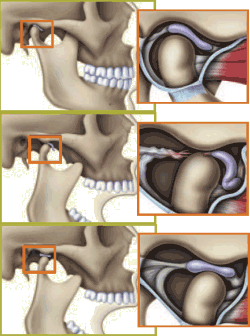
Joint disorders occur when there are some problems with the joint or the muscles surrounding the temporomandibular joint or severe injuries to the jaw, the joint itself, and the muscles in the head and neck.
Causes of temporomandibular joint disorders
- teeth grinding or grinding (bruxism), which increases the pressure on the temporomandibular joint
- dislocation of the soft disc located between the alveolar bone and the temporomandibular joint
- osteoarthritis or rheumatoid arthritis
- stress. Most of the time people who are under stress tend to tense up their facial muscles and clench their teeth.
The recommended forms of surgery for temporomandibular disorders are
- Arthrocentesis, performed in the dentist's office under general anesthesia is recommended for patients with reduced mobility at the temporomandibular joint. This surgery involves inserting needles into the affected area (joint puncture) and washing the jaw with sterile fluids.
- Arthroscopy, also performed under general anaesthesia, involves making an incision in the ear and inserting an instrument to examine the temporomandibular joint area.
- Open surgery, in turn performed under general anaesthesia, has a higher degree of invasiveness. This form of treatment is necessary when:
- the bone structures of the joint are deteriorating
- there are tumours around the joint
- there are loose bone fragments in the joint
 RO
RO  EN
EN 